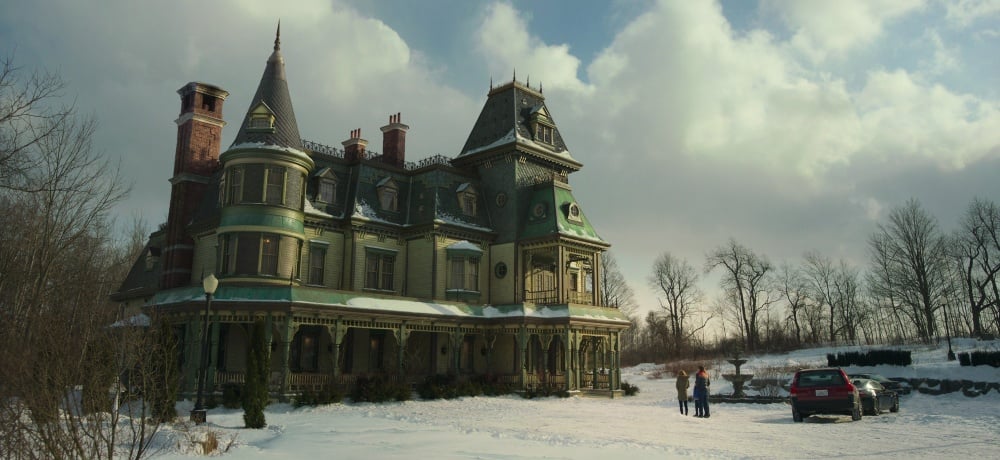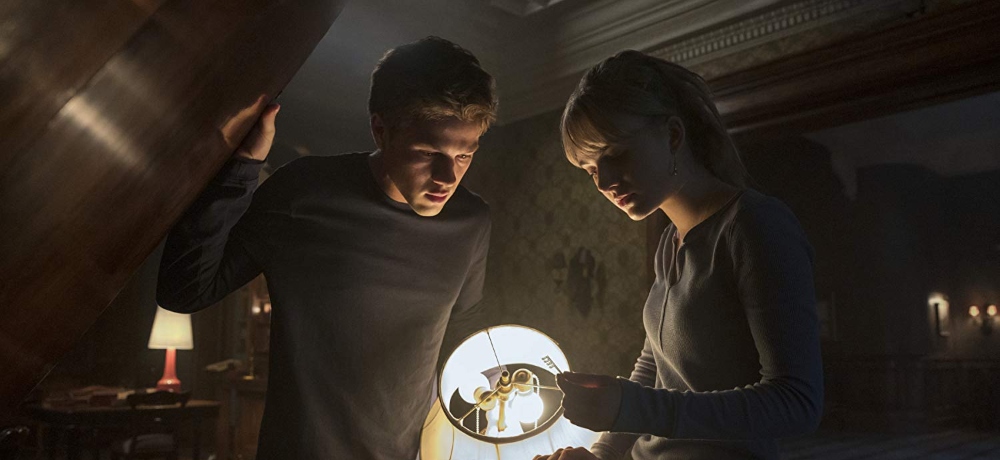


Hot off the heels of their The Witcher adaptation, Netflix has taken another beloved fantasy series and turned it into one of the year’s exciting new shows. Just like the show with a sword-wielding, grey-haired Henry Cavill, Locke & Key season two is already being written even before the first one premieres. And there’s a reason for it: the fanbase of the adapted work is huge. Based on the comic book series by Joe Hill and Gabriel Rodriguez (with Hill also having a hand in developing the show), Locke & Key contains an excellent balance of fantasy and supernatural horror, but feels very much catered to a young adult audience. It won’t give you the scares of The Haunting of Hill House or the gore of The Witcher, but there’s family drama, mysteries galore, and secrets—so many dark and twisty secrets. If you haven’t read the comics, it will make you want to seek them out even after just the first episode, and it will leave you hungry for a second season.
Locke & Key opens with a brilliant title sequence—a high energy score tickling the ivories. Rendell Locke (Bill Heck) has been murdered, and his widow, Nina (Darby Stanchfield), has packed up their life in Seattle and moved her kids to the fictional town of Matheson, Massachusetts. The townsfolk know the Lockes all too well, as they fear the legend of their ancestral home, Keyhouse; a legend surrounded by tales of death and madness. Rendell was killed over its secrets, but Nina believes that bringing her family to the house he grew up in will help heal her broken family. It’s a Victorian mansion that feels “Norman Bates” on the outside, as the eldest son, Tyler (Connor Jessup), puts it. The interior gives the same feeling of elegance and sophistication as the Thrombey house in Knives Out. It’s very English, with a big squeaky staircase, too many rooms to count, endless halls, and portraits of ancestors whose names they don’t know, with the kitchen being the most modern room. This is a show with horror elements and a white family in a spooky mansion, what could possibly go wrong?
First and foremost, Locke & Key presents a familial dynamic struggling with grief and PTSD. These children saw their father murdered right before their eyes and they’re struggling to process that. There are various points throughout the show where they zone out or get incredibly agitated because they have triggers that cause memories from that day to come back, and as such, the audience gets a glimpse of the horrors, too. Probably the most frightening part of the show, at least for the characters whose lives we are watching, is having to experience those memories all over again and the guilt they can carry.
This weighs most heavily on Nina, Tyler, and Kinsey (Emilia Jones), the middle child. Both Nina and Kinsey feel guilty because they feel like they didn’t protect their family. Nina struck a blow to her husband’s killer, but it wasn’t deadly. Kinsey compares herself to a cowardly final girl who survives because she hides and not because she fights back. Tyler’s guilt comes from a much more complicated place because he was close with the killer, so he feels like his father’s death is somehow his fault. These characters are so incredibly complex and well written that you feel you’re going through all this pain with them. Their father’s death leads to many other internal conflicts. For Tyler, it’s mainly the realization of suddenly being the man of the house and the pressure that comes with. Kinsey struggles to bury the fear the memories of her dad’s death created, and she spends most of the season in denial thinking that she has, which changes her into a more reckless and unlikable character. She soon realizes, though, that fear is something you have to confront. As for their mother, Nina, she’s a recovering alcoholic who constantly feels like she’s not doing enough and is struggling to feel close to her children again, and there’s always a fear that she’ll tip over the edge and fall off the wagon.

Now, for those infamous keys. It all comes down to Bode (Jackson Robert Scott), the baby of the family. We don’t see him grieve like the rest of the family very much, if it all. But it’s like the writers are giving a little nudge of a reminder that we all grieve differently and there’s no wrong way to do so. The most interesting part of the show’s first half is found with Bode, as Kinsey and Tyler spend most of their time trying to navigate a new school, with all the typical high school shenanigans of extracurriculars, parties, boy trouble, and girl trouble. There are a lot of forgettable subplots and secondary characters as a result, most of them feeling like filler, so it’s always great to get back to the adorable Bode alone in Keyhouse. He begins to hear whispers—supernatural, ghostly whispers. And when he follows the voices, they lead to a key. They call to him, and for most of the show, he’s the only one who can hear them.
Each key is distinctly designed and has its own purpose, like a different wand with a unique spell attached. You lose track of how many keys there are after a while. There’s one that can take you anywhere, one that can turn you into a ghost, one that can allow you to peer inside another’s mind, one that can mend broken objects, another for the pyromaniacs, and many more. Where these keys come from, who created them, is never explained, but you’ll wish you had at least one of them.
And, of course, there couldn’t be a show like this without a villain, something Bode’s curious nature also discovers. There’s a well house on the property, and inside, he hears a female voice. At first, she appears elegant and friendly, in a green dress that makes you think of Keira Knightley’s iconic look in Atonement. Played by Laysla De Oliveira, she’s a modern femme fatale. Seductive, cunning, and fierce like Catwoman, with an evil and unremorseful black heart like Doctor Sleep’s Rose the Hat. She’s so ruthless, and De Oliveira is so fun to watch. She can’t take the keys unless their protectors offer them to her, but she has many tricks up her sleeve and she doesn’t care what she does or who she hurts along the way to get what she wants. She attacks the Locke children in creative ways that make her scenes some of the more suspenseful ones. (They also have Billie Eilish’s “You Should See Me in a Crown” playing as part of her soundtrack because, you know, she’s a queen.)
Imagine leaving your friends behind to move across the country to live in your big, moldy ancestral home you’d never even heard of before and come to find out it’s permeated with devilish trickery. A nightmare, surely, and Tyler, Kinsey, and Bode are alone in their attempt to pick its locks and defend their family agaisnt a darkness they can’t even begin to understand. The adults in their life aren’t capable of processing the magic that surrounds them, like Muggles in Harry Potter, you could say. The kids become the protectors of the keys, just as their father and his friends once were. The old protectors play a big part in Keyhouse’s mystery. There are dark secrets harbored in the walls of Keyhouse from the spirits who used to dwell there. Truths reveal themselves and secrets unravel in many shocking subplots that the show impressively tackles all at once and resolves successfully.
Death follows the family and Locke & Key follows them trying to make sense of it all. It gets explosive and suspenseful pretty early on, and you feel like this is it, this is the end. Then, there are four more episodes. It’s kind of a rollercoaster with a changing momentum that doesn’t always work, but it’s nice to not leave all the exciting stuff to the end, which delivers an excellent conclusion that ties everything together. There are no loose ends left behind. It’s twist-filled, exciting, and really touching, too. The show isn’t perfect, but the audience grows to love spending time with the Locke family thanks to the central cast’s affecting performances, and they’ll leave you hungry for more.
Score: 3.5/5